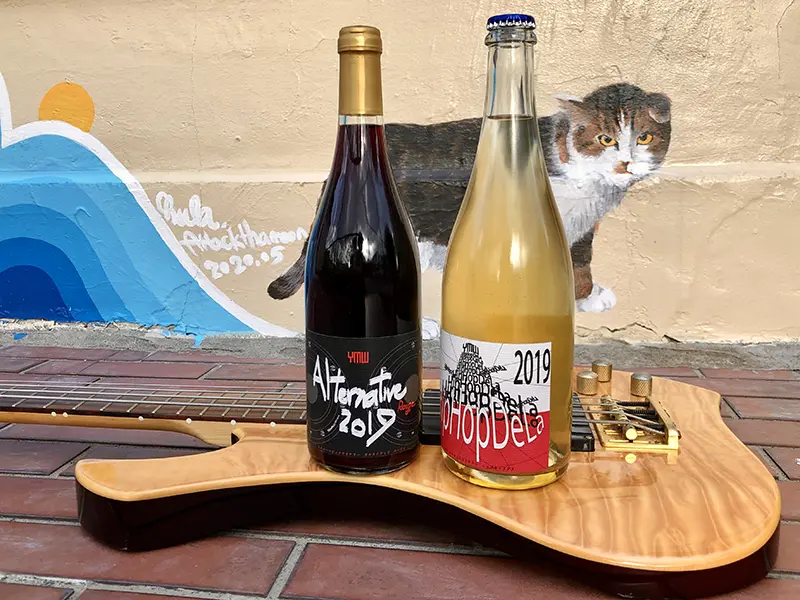Let’s try to apply the concept of 'specialty' to wine. Just like with coffee, such a 'certification' should include two components: the production technology and the connoisseur's evaluation.
Strictly speaking, the technology of wine production encompasses the entire journey 'from sapling to glass.' The first stage is the birth of 'specialty grapes,' which must be grown using organic or biodynamic methods considering the entire ecosystem surrounding the plant. The role of grapes in wine production is immense: one can make good or bad wines from good grapes, but one can't make good wine from bad grapes.
The specialty grape farmer faces two seemingly contradictory tasks: they must grow perfect grapes... without interfering in the natural growth process. The goal is not to support the plant with chemical 'crutches' but to allow it to produce the best fruit on its own. Through timely preventive measures, the farmer helps the grapes avoid diseases in the first place rather than treating their symptoms. This requires extensive experience, constant attention, and, of course, intuition—no instruments can determine the best time to harvest.
The second stage is the creation and 'nurturing' of the wine at the winery. 'Nurturing' wine—or élevage in French—is a term describing the ageing of wine in a container after alcoholic fermentation is complete; often, it refers to the entire vinification process. Here, too, the principle of minimal human intervention in the natural processes is at play. Only 'wild' yeasts are allowed in the fermentation process, and artificial additives that turn wine into an industrial product have no place here. The winemaker must allow the grapes to express their best qualities and realise their potential—sometimes in the most unexpected ways, using a diverse palette of natural tools.
For example, skin contact (maceration of the must on the grape skins), widely used in the production of the currently trendy orange wines, is employed to extract various substances from the grape skins and seeds that impart additional flavours and colour to the wine. Carbonic maceration (anaerobic fermentation with the release of carbon dioxide, which spontaneously begins inside uncrushed berries) is used to produce softer wines with atypical flavours. Experiments with various containers—clay amphoras, steel tanks, barrels, casks, cement 'eggs'—allow winemakers to create wines with entirely different organoleptic properties from the same harvest. Another widely used technique is completing primary fermentation in the bottle, which is used to produce refreshing pét-nats (from the French pétillant naturel—'natural sparkling').
Even this brief overview is enough to understand how arduous and lengthy the journey 'from sapling to glass' can be. Numerous factors can prevent wine from achieving specialty status: bad weather, pest infestations, and various diseases that threaten the grapes at every step. The grower is not immune to mistakes: they may lack the experience to produce a sufficiently healthy crop for the winemaker to start fermentation without artificial yeasts. Finally, even after bottling, the wine can lose its specialty status during transport and storage: the absence of preservatives makes it highly sensitive to temperature fluctuations, vibrations, humidity levels, and ultraviolet radiation.
Such 'natural selection' means that, by definition, there cannot be much specialty wine: quality and quantity are in strict inverse correlation. Moreover, specialty wine is always a 'handcrafted' product, as all such wines are produced by very small estates. Their production volume is usually limited by the winemaker's capacity and, in most cases, does not exceed 50,000 bottles per year.
However, as we noted at the beginning of this essay, production specifics are just one component of the 'specialty' concept. The entire long journey from sapling to glass finds its meaning only in the glass—and only if the wine produces the often-described 'wow effect.' Despite the seemingly subjective nature of this criterion, properly prepared specialty wine has a range of easily recognizable traits. One of these is the purity and freshness of flavour so highly valued by connoisseurs, completely free from any 'taste noise.' This is the fine line that separates natural wines from specialty wines: every specialty wine is natural, but the 'specialty' label is reserved for natural wine made from select, high-quality grapes capable of inspiring true admiration in the connoisseur.
